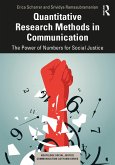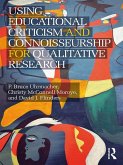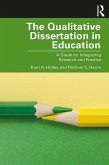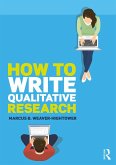Dieser Download kann aus rechtlichen Gründen nur mit Rechnungsadresse in A, B, BG, CY, CZ, D, DK, EW, E, FIN, F, GR, HR, H, IRL, I, LT, L, LR, M, NL, PL, P, R, S, SLO, SK ausgeliefert werden.
Overall, I felt this book captured the important elements of basic educational statistics and ANOVA designs, the formulas for how they are calculated, as well as how to run the analysis in a commonly and widely used statistical software (SPSS) in a way that is approachable and clear. This text seems to capture the elements often found in multiple, separate sources (e.g., epistemology, research design, analysis, use of statistical software, and considerations for social justice/equity) and combines them in one text.
This is so helpful, useful, and needed!
Sara R. Gordon, Ph.D.
Associate Professor
Center for Leadership and Learning
Arkansas Tech University
The ability to analyze data has never been more important given the volume of information available today. A challenge is ensuring that individuals understand the connectedness between research design and statistical analysis. Strunk and Mwavita introduce fundamental elements of the research process and illustrate statistical analyses in the context of research design. This provides readers with tangible examples of how these elements are related and can affect the interpretation of results.
Many statistical analysis and research design textbooks provide depth, but may not situate scenarios in an applied context. Strunk and Mwavita provide illustrative examples that are realistic and accessible to those seeking a strong foundation in good research practices.
Again, thank you for this opportunity. I genuinely believe this is a textbook I would feel comfortable using with my own students and look forward to seeing it in print.
Forrest C. Lane, Ph.D.
Associate Professor and Chair
Department of Educational Leadership
Strunk and Mwavita provide a sound introductory text that is easily accessible to readers learning applied analysis for the first time.
The chapters flow easily through traditional topics of null hypothesis testing and p-values. The chapters include hand calculations that assist students in understanding where the variance is and case studies at the end to develop writing skills related to each analysis. In addition, SPSS is integrated toward the end of the chapters after readers have seen and learned to interpret the techniques by hand. Finally, the length of the book is more manageable for readers as a first introduction to educational statistics.
James Schreiber, Ph.D.
Professor, School of Nursing
Duquesne University









